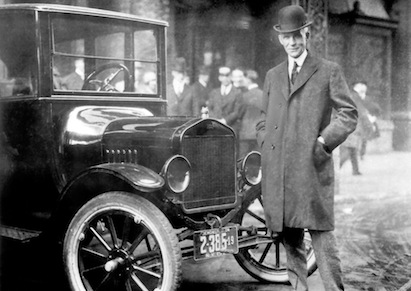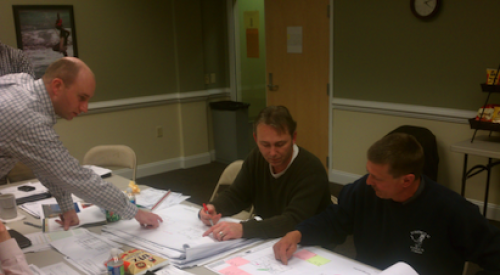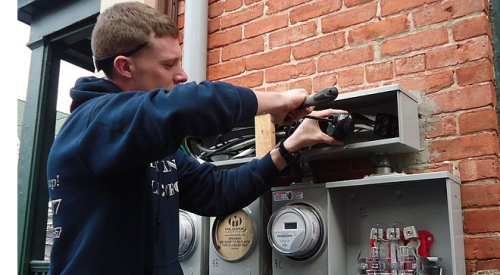Henry Ford was a genius and if not father of the automobile per se, he was arguably father of the automotive industry. As usually accompanies genius, Ford was a little wacky in some regards and some of his beliefs about ethnic groups and how to control the behavior of workers not just on, but off the job, certainly give one pause. There are many key principles in Lean Building that can be traced all the way back to Henry Ford so it is with no little irony that 100 years ago some of the techniques we labor to get builders to adopt today, were running full tilt in Detroit not more than 20 miles from where I sit. Ford is most often remembered for his industrial prowess, but he also left many memorable quotes about attitude and workplace culture. One that comes to my mind frequently goes like this:
“Whether you think that you can do a thing, or that you can’t – you are usually right.” - Henry Ford
Simple, eh? But can anything that simple be truly powerful? I have gotten around a bit in my nearly 40-year business career. Before coming to homebuilding full-time in 1989, I worked for U.S. Steel, Motorola, then two consulting firms where I did projects with more than 30 companies including John Deere, Cummins Engine, 5 entities of the old AT&T and a plethora of banks, insurance companies and publishing houses among others. (The guys who made stuff were by far my favorite.) After 8 ½ years at Pulte I launched TrueNorth 14 years ago and we have worked with more than 150 builders in the U.S., Canada and Australia, along with a large contingent of suppliers, trade contractors and manufacturers in the industry. Through it all, I have found that Ford’s simple notion, that the act of making a clear decision and commitment to make something work – or not – makes all the difference, and is almost universally true in any business, in any culture.
I saw it at U.S. Steel just out of college. After going through the management training program you are sent on a round-robin tour, spending a week each in 20 different smaller mills or service entities within the complex. The difference between the “can do” groups and the “cannot do” groups was palpable. My next job at Motorola had me working with multiple plants around the country and I learned some of my greatest lessons at the Albuquerque plant, where a brilliant general manager named Doug Bosomworth never saw obstacles, only opportunities. Hence, his people saw things that way as well – a genuine “world of abundance” culture. The group at the Franklin Park plant, however, was forever mired in the “zero-sum-game” culture espoused by their general manager and fought every new idea that came down the line. I could not get out of that place fast enough.
During my consulting years I saw Henry’s phenomenon in different John Deere and Cummins Engine plants, and even departments within plants. Interestingly, at the old AT&T operations, it seemed “cannot do” was company mantra, yet after Judge Green rendered his famous decision to break up AT&T in 1981, some of the old Baby Bells broke out of those doldrums with remarkable speed. It was all dependent upon the leadership.
At Pulte, the differences in can/cannot were evident in our (then) 28 city divisions. Some were a joy to visit and work with – Northern California, Minnesota and Tucson come to mind – while the goal of others was to get you to join in their depression as soon as possible. That was 20 years ago, and depending on the managers in those cities, the cultures could be wholly changed.
And now? I am frequently asked what makes the difference in the companies that get just decent results from our Lean processes, versus those that are flat-out wildly successful. We put together great processes and have great people, so I would like to believe that it’s all on our account. Yet those very same processes, although I am proud to say always work, work a lot better with some builders, suppliers and trades than others. What accounts for the difference? Is it truly as simple as the attitude that Henry Ford described? Those homebuilders who exude the “can-do” attitude – which always comes from the top – and demonstrate a huge thirst to find whatever possible to learn and improve, invariably knock the cover off the ball. The other builders, those that just do “okay,” are always stuck on something whether it’s government regulations, the financial industry, their suppliers or just that it looks like rain today. There is always the “been there, tried that, won’t work” current among some members of those builder teams. There is always fear of not looking good. There is always fear of retribution. All that combines to create the “cannot do” culture.
I understand that in this 5-year housing recession, it is at times a challenge to maintain the can-do spirit and I am with you there. There are days when I have to whack myself upside the head and repeat the Henry Ford mantra. Yet all I have to do is think of the best companies in my history, our best current clients and the exceptional people who run them, and the message comes clear again. If I think I can do a thing, I am right.













